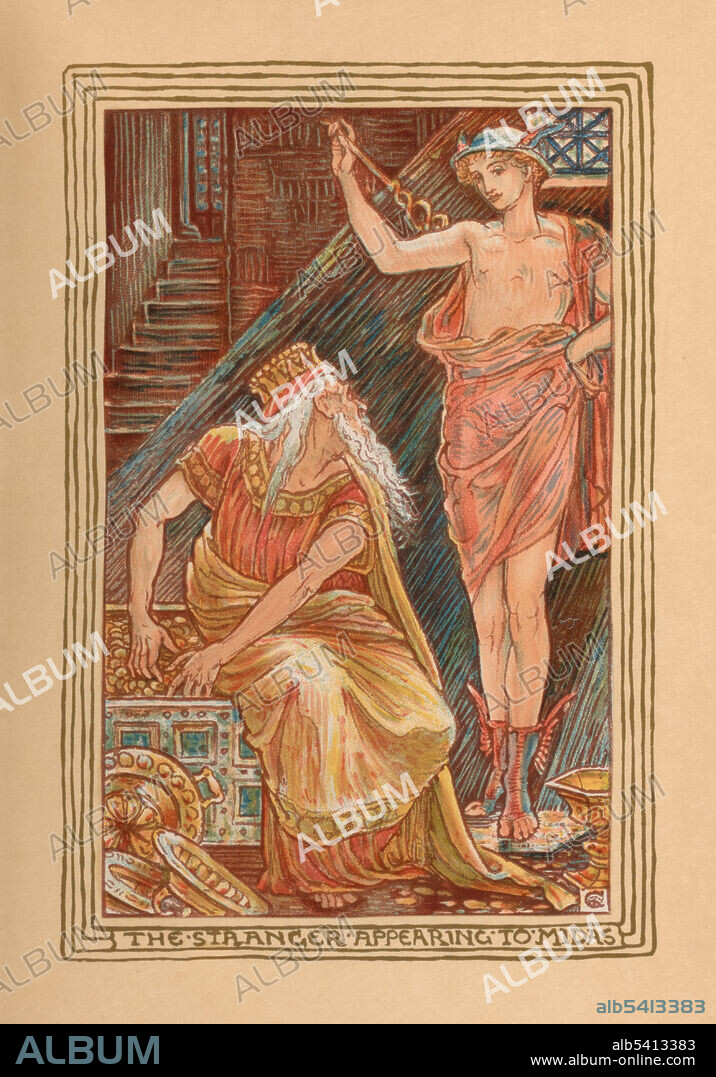alb5413383
The Stranger Appearing to Midas

|
Ajouter à une autre Lightbox |
|
Ajouter à une autre Lightbox |



Avez-vous déjà un compte? S'identifier
Vous n'avez pas de compte ? S'inscrire
Acheter cette image.
Sélectionnez l'usage:

Titre:
The Stranger Appearing to Midas
Légende:
Traduction automatique: The Golden Touch raconte l'histoire du roi Midas, connu pour sa capacité à transformer tout ce qu'il touchait en or. Dans la version racontée par Hawthorne, la fille de Midas est venue vers lui, bouleversée par les roses qui avaient perdu leur parfum et étaient devenues dures, et quand il a tendu la main pour la réconforter, elle s'est également transformée en or. Or, Midas détestait le cadeau qu'il avait convoité. Il a prié Dionysos, implorant d'être délivré de la faim. Dionysos entendit sa prière et y consentit, disant à Midas de se laver dans la rivière Pactolus. Ensuite, tout ce qu?il mettrait dans l?eau serait inversé au toucher. Nathaniel Hawthorne (1804-1864) était un romancier américain, un romancier noir et un nouvelliste. Son livre A Wonder-Book for Girls and Boys, publié pour la première fois en 1851, est un livre pour enfants dans lequel il raconte plusieurs mythes grecs. Walter Crane (1845-1915) était un artiste et illustrateur de livres anglais. Imprimé à Riverside Press, 1893
The Golden Touch, recounts the tale of King Midas popularly remembered for his ability to turn everything he touched into gold. In the version told by Hawthorne, Midas' daughter came to him, upset about the roses that had lost their fragrance and become hard, and when he reached out to comfort her, she turned to gold as well. Now, Midas hated the gift he had coveted. He prayed to Dionysus, begging to be delivered from starvation. Dionysus heard his prayer, and consented, telling Midas to wash in the river Pactolus. Then, whatever he put into the water would be reversed of the touch. Nathaniel Hawthorne (1804-1864) was an American novelist, dark romantic, and short story writer. His, A Wonder-Book for Girls and Boys, first published in 1851, is a children's book in which he retells several Greek myths. Walter Crane (1845-1915) was an English artist and book illustrator. Printed at the Riverside Press, 1893.
Crédit:
Album / LOC/Rare Book Selections/Science Source
Autorisations:
Modèle: Non - Propriété: Non
Questions sur les droits?
Questions sur les droits?
Taille de l'image:
3145 x 4500 px | 40.5 MB
Taille d'impression:
26.6 x 38.1 cm | 10.5 x 15.0 in (300 dpi)
Mots clés:
AMÉRICAIN • ANGLETERRE • AUBÉPINE • AUTEUR • AUTEURS • CÉLÈBRE • CELEBRITE • ENFANT • GRECE • ILLUSTRATION • LITTERAIRE • MOUVEMENT • MYTHIQUE • ROI • XIXE SIÈCLE
 Pinterest
Pinterest Twitter
Twitter Facebook
Facebook Copier le lien
Copier le lien Email
Email
